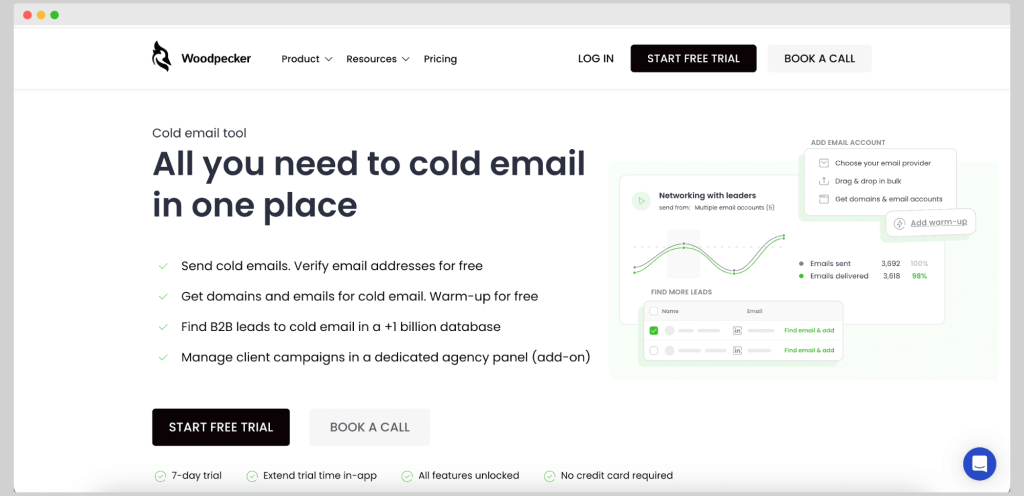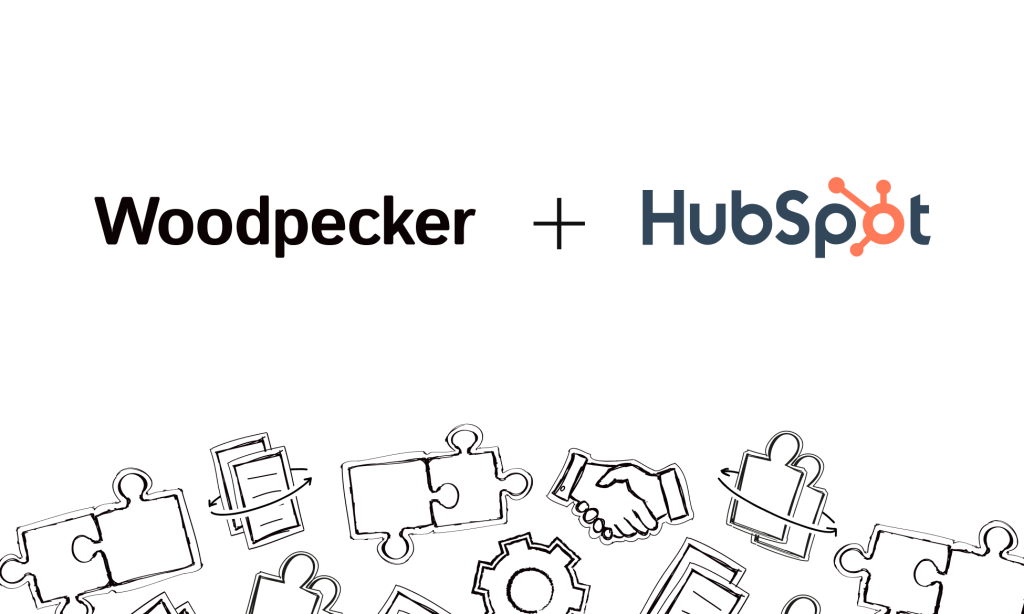If you’re reading this, chances are you’ve spent hours crafting marketing emails in HubSpot, double-checked your content, maybe even set up DKIM, and still—your emails go straight to the spam folder or vanish without a trace. You check your Email Health dashboard, run through best practices, and yet, results aren’t matching your effort. Every “delivered” status in HubSpot doesn’t guarantee a real human saw your message. What’s actually happening?
Maybe you’re launching a new campaign, scaling up email volume, or just switched sending domains. Or maybe you got tired of seeing unsubscribes and bounces climbing higher every month. Whatever brought you here, the frustration is real: why are legitimate marketing emails, sent through a top-tier email service provider, still struggling to reach inboxes?
Let’s break down the exact reasons your HubSpot email deliverability might be suffering, how mailbox providers really judge you, and what you can do (right now) to improve your sender reputation and email performance.
Why HubSpot Users Struggle with Deliverability (And What to Check First)

1. “Everything Looks Right—So Why Am I Blocked?”
The most common pain point: everything in HubSpot looks green. No major complaints, bounces seem low, content is on-brand. Still, important emails go missing—or worse, end up flagged as spam.
Painful truth: “Delivered” doesn’t mean inboxed. Mailbox providers can silently block, filter, or downgrade your emails, and your ESP dashboard won’t always show it.
- What to check:
- Are you ramping up email volume too quickly, especially from a new domain?
- Have you monitored sender reputation outside HubSpot, or just looked at your internal stats?
- Is your authentication (DKIM, SPF) fully set up and passing checks for each email sending domain?
2. “I’m Getting Spam Complaints, But I Follow Best Practices!”
Even careful senders—who never buy lists, use a clean database, and include unsubscribes—can rack up spam complaints or get blocked.
Painful truth: Mailbox providers judge you by engagement. If recipients aren’t opening, clicking, or replying (or, worse, reporting you as spam), your sender reputation tanks—fast.
- What to check:
- Are you re-sending to cold or disengaged email addresses, hoping they’ll “warm up” over time?
- Have you integrated external list cleaning or just trusted HubSpot’s built-in hygiene?
- Do you segment and personalize for individual recipients, or send the same marketing emails to your whole list?
3. “Our Email Volume Is Up, But Performance Is Down”
Many HubSpot users crank up campaigns and watch open and click rates fall.
Painful truth: Sudden spikes in email traffic (especially from a new or previously dormant sending domain) set off mailbox provider alarms. Even legitimate companies get caught in automated filters.
- What to check:
- Did you slowly warm up your dedicated IP or just blast your full list at once?
- Are you tracking bounce and block rates after every campaign, not just aggregate stats?
- Are you using automation tools to stagger sends and mimic real human behavior—or sending to thousands all at the same minute?
4. “We’re Following HubSpot’s Advice. Why Is It Not Working?”
You’ve read the guides, followed every update, set up DKIM, and still—deliverability issues.
Painful truth: Even the best practices can fail if you miss external factors. Sometimes the shared IP you’re on is “dirty” from another sender, or a mailbox provider updates their filtering algorithm overnight.
- What to check:
- Have you checked public blacklists for your domain or IP?
- Have you considered moving to a dedicated IP for full control over sending reputation?
- Are you monitoring inbox placement with third-party tools, not just trusting HubSpot’s reports?
You’re not alone if you feel like you’re doing everything right and still getting blocked. The reality is, HubSpot is an excellent platform for email marketing—but even the best ESP can’t guarantee inbox placement if mailbox providers don’t trust your practices.
📚 Read more: HubSpot Cold Email – Is It Allowed Or Not? + Alternatives
What Are Mailbox Providers Actually Looking For? (And Why HubSpot Isn’t Always Enough)
If you’re like most marketers, you’ve probably noticed that even when you follow all the classic best practices in HubSpot, some emails still end up blocked, buried in the spam folder, or quietly ignored. That’s because mailbox providers—think Gmail, Outlook, and Yahoo—look at a lot more than your ESP dashboard stats. Here’s what really matters behind the scenes:
1. Engagement: Are Real People Actually Interested?
Mailbox providers want to see signs your individual recipients care about your emails. That means opens, clicks, replies, and forwards—not just big email volume. If your marketing emails get ignored, or your campaigns rack up spam complaints and unsubscribes, your sender reputation drops.
Action:
- Track your open and click rates for each email campaign.
- Remove addresses that never engage, and never keep sending to purchased lists or cold segments just to “maintain volume.”
- Segment by activity—focus your best content and offers on the contacts who actually want them.
📚 Read more: How to improve your cold email engagement rate?
2. Consistency: Is Your Sending Behavior Trustworthy?
Sudden changes—like blasting thousands of emails from a new domain or dedicated IP—look suspicious. Mailbox providers reward senders who build up their volume slowly and deliver consistently good content.
Action:
- If you’re switching domains, or have a new sending IP, set up a ramp-up plan: start with small batches, then scale up as engagement stays strong.
- Use monitoring tools to track any sudden dips in inbox placement, spikes in bounces, or delivery issues.
3. Technical Setup: Are Your Emails Authenticated and Legitimate?
DKIM and SPF are your non-negotiables. Without them, mailbox providers might see your emails as spam or phishing attempts—no matter how great your content or sender intentions.
Action:
- Always check your DKIM and SPF status for every sending domain (HubSpot makes setup easy, but it’s your job to verify).
- Make sure your “from” address and sending domain match and look professional—avoid free mailbox domains or mismatched URLs.
- For larger senders, consider moving to a dedicated IP to fully control your sending reputation and avoid risks from shared infrastructure.
4. Content and Personalization: Are You Speaking to Humans (Not Lists)?
Mailbox algorithms are getting smarter—generic messages, “spray and pray” tactics, and bulk campaigns to massive, non-segmented lists are all red flags. The more your emails look like one-to-one communication (personalized, relevant, with clear call to action), the better your chance of landing in the inbox.
Action:
- Personalize every campaign. Use first names, reference recent activity, or touch on industry trends your prospect cares about.
- Avoid language and formatting that screams “mass email”—keep it conversational and authentic.
- Continually A/B test your subject lines and message style. What works today might not work next month.
Real-World Example: Spotting a Hidden Deliverability Killer
Let’s say you’ve set up a new campaign and notice a sudden drop in email performance—open rates tank, bounces increase, and fewer people click through. What’s going on?
- Maybe a chunk of your list includes outdated or role-based email addresses (like “info@” or “sales@”), which are common spam traps.
- Perhaps your content hasn’t changed, but mailbox providers have updated their filtering—suddenly, a phrase in your template is being flagged.
- Or, someone on your shared IP started sending to purchased lists, and now your sender reputation is tied to theirs.
How to catch and fix it:
- Regularly review your campaign analytics—not just the “delivered” numbers, but actual inbox placement, opens, bounces, and spam complaints.
- Use an external monitoring tool or a platform built for outbound and cold outreach to double-check where your emails land.
- Don’t just trust “all good” messages from your ESP. Sometimes, only a third-party tool or a shift to a more specialized platform gives you the insights you need.
When It’s Time for a Different Tool: Where Woodpecker Shines
If your core business depends on cold email outreach, outbound sales, or any strategy where getting into a stranger’s inbox means everything, you might find HubSpot’s broad approach hitting its limits. That’s where purpose-built solutions like Woodpecker come in.

Woodpecker is designed from the ground up for high-deliverability outreach:
- It gives you granular control over sending domains, ramp-up schedules, and message timing.
- You get dedicated tools for inbox placement monitoring, real engagement tracking, and easy list hygiene—all tailored for outbound.
- Woodpecker avoids the “ESP bloat” and shared IP pitfalls that can quietly sabotage your sender reputation on bigger platforms.
- Want to create outreach campaigns that feel like real conversations and connect with legitimate prospects? Woodpecker is made for that—no more guessing where your emails actually land.
You don’t want to quit Hubspot? Good news here! You can have both. Integrate Hubspot and Woodpecker.

Quick Checklist: How to Improve Your Email Deliverability Today
- Set up DKIM and SPF for every sending domain.
- Build your own lists (never purchase), and clean them monthly.
- Ramp up email volume slowly, especially with a new domain or dedicated IP.
- Monitor complaints, bounces, and inbox placement—don’t rely on “delivered” stats alone.
- Personalize every campaign and message.
- Consider a purpose-built tool like Woodpecker if you rely on cold outreach.
Conclusion
Email deliverability isn’t a checkbox—it’s a moving target. Even on leading platforms like HubSpot, you need to monitor, test, and update your approach to avoid the spam folder and actually connect with your customers. The right combination of best practices, real-time monitoring, and (when needed) a more specialized outreach tool can make the difference between being blocked and building real business relationships.
Still hitting roadblocks with HubSpot or curious if a cold outreach platform would work better? Check out Woodpecker, get your questions answered, and give your next campaign a real shot at landing. Sign up for Woodpecker’s free trial now.
FAQ
What is the deliverability rate for HubSpot?
According to a recent Email Deliverability Report, HubSpot achieves an inbox placement rate of 83.4%, with 13.1% landing in spam folders and 3.5% being lost.
Inbox rate (83.4%): solid performance—on par with industry averages normally considered “good” (83–89%)
Spam folder hits (13.1%) and lost emails (3.5%) highlight that while decent, there’s still room for improvement.
Additionally, a broader dataset shows that roughly 78.9% of 465,408 emails sent via HubSpot landed in the main inbox.
Do HubSpot emails go to spam?
Yes — about 10–13% of HubSpot marketing emails end up in the spam folder, based on available data.
Even users with well-setup domains report that some messages end up blocked or classified as spam, often unexpectedly.
With factors like shared IP infrastructure, cold campaigns, and content filters in play, deliverability isn’t guaranteed—especially if you rely on purchased lists, high volume, or little personalization.
How do I prevent spam in HubSpot?
HubSpot offers a host of built-in features and best practices to keep your email campaigns from hitting spam flags:
Domain Authentication (SPF, DKIM, DMARC) – Setup via HubSpot’s in-app wizard
Slow ramp-up of volume – Whether using dedicated or shared IP, grow your email volume over weeks
List hygiene & graymail protection – HubSpot automatically suppresses bounces, unsubscribes, and complaints. Pro tip: enable double opt-in and turn on graymail suppression.
Monitor the Email Health dashboard – Review opens, clicks, spam reports, bounces, and overall health score.
Personalize content & segment lists – Send relevant, targeted emails—not bulk blasts—using personalization tokens, A/B testing, and content tailored to individual recipients.
Use third-party list validation – Integrate tools to reduce undeliverable addresses.
How many emails can HubSpot send a day?
Marketing emails:
Standard limit is around 1,000 sends per day per user—you can request increases by plan tier.
Trial accounts have a cap of 5,000 sends total.
One-to-one / sequence emails (Sales Hub):
Users can configure limits, up to 1,000/day depending on the connected email account (e.g., Gmail or O365).
Gmail free accounts are capped at 350 per day.
Sequence messaging often hits a 500–1,000/day ceiling due to email providers like Gmail/Outlook restrictions.

